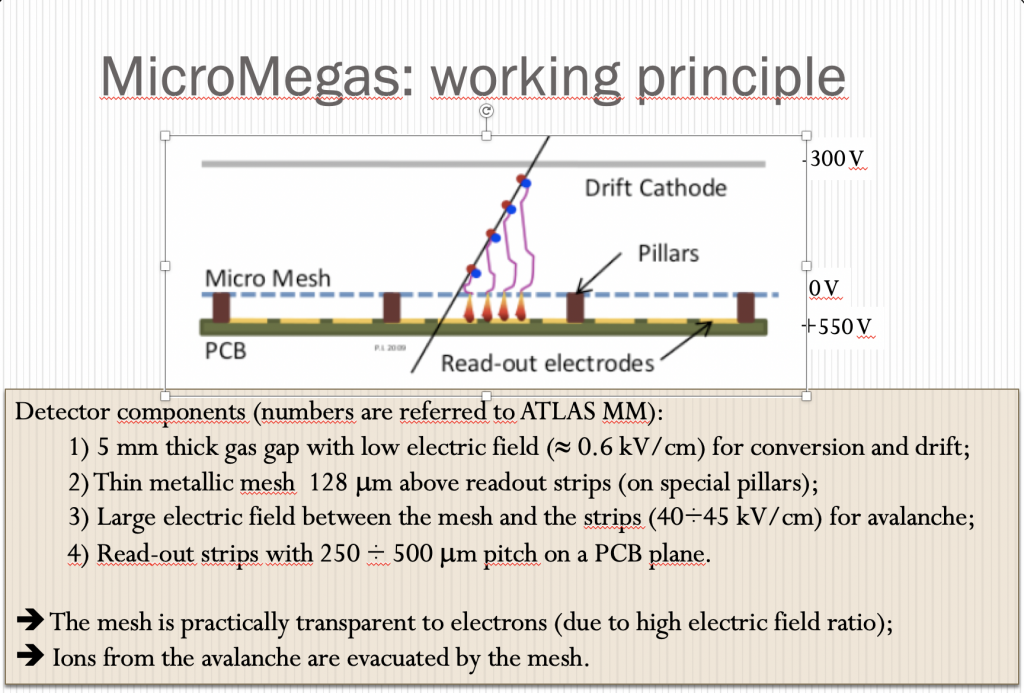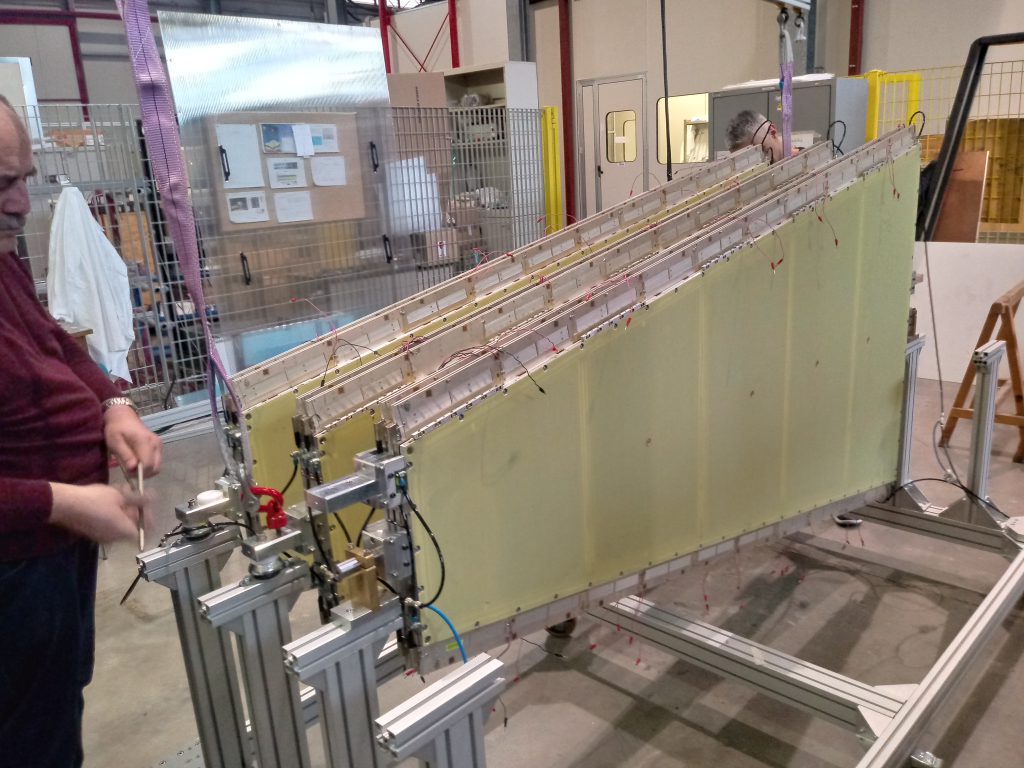In 2012 the ATLAS Rome group joined the ATLAS effort to realize the so-called New Small Wheels, the largest phase-1 upgrade of the ATLAS Muon Spectrometer. Such an upgrade consists in the replacement of the present Small Wheels that are the innermost endcap stations of the spectrometer with completely new detectors better suited to cope with the high expected rate in that region of the detector during the High Luminosity LHC: the small TGC (sTGC) and the MicroMegas (MM).

Since the beginning our group joined the MicroMegas collaboration. These detectors belong to the category of the so called Micro Strip Gas Detectors (MSGD) and were developed in the ‘90s but became mature enough for application in high energy experiments only recently thanks to the long R&D carried on by the MAMMA collaboration. ATLAS decided to use this technology for the New Small Wheel, by realizing large surface (between 2 and 3 m2) 4-gap detectors.
These chambers are built in four different construction sites, each committed in the construction of 32 quadruplets. INFN is one of these construction sites, and the production is shared in Italy by different labs: Rome1, Rome3, Pavia, Cosenza and finally Frascati where the final quadruplets are assembled.

Our group is committed in the project at different levels: in our workshop we are building the drift panels, that is one of the parts of the quadruplets; then we participate in the assembly and validation of the quadruplets in Frascati; finally we will contribute to the integration and the commissioning of the chambers at CERN.
We foresee to complete the construction of the drift panels within the first months of 2019, to complete the assembly of the 32 quadruplets in the first months of 2020.